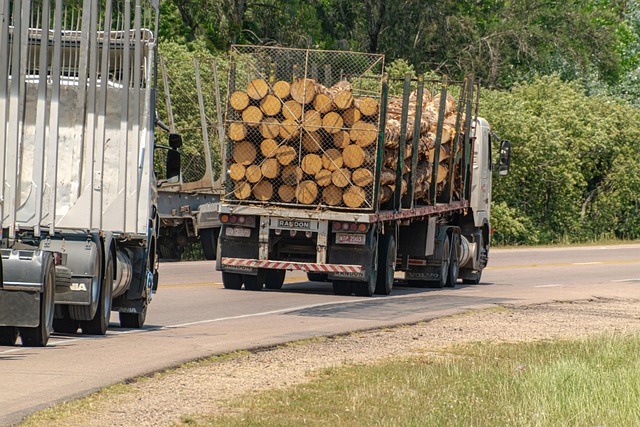Looking to register your car in California? Our comprehensive guide walks you through the entire process, from understanding essential requirements to completing the registration online or in-person. We emphasize the crucial role of a VIN (Vehicle Identification Number) verifier in ensuring accuracy. Gather all necessary documents and follow our step-by-step instructions for a smooth car registration experience in the Golden State.
- Understand the Requirements for Car Registration in California
- Gather Necessary Documents for Car Registration
- Verify the Vehicle's VIN (Vehicle Identification Number)
- Complete the Car Registration Process Online or In-Person
- Pay the Required Fees and Receive Your Registration Documents
Understand the Requirements for Car Registration in California

Before registering your car in California, it’s crucial to understand what is required. The state has specific guidelines for ensuring that all vehicles on its roads meet safety and identification standards. One key component is a valid Vehicle Identification Number (VIN) inspection, which verifies the authenticity of your vehicle’s details. This process involves checking critical components like the engine, chassis, and transmission against the unique 17-character VIN code.
In California, a mobile VIN verifier can be a convenient option for those who prefer not to visit a DMV office. These services allow you to get your VIN inspection done quickly and efficiently at your location, whether it’s at home or work. By using advanced technology, a mobile vin verification service ensures that your car’s registration process is seamless and accurate.
Gather Necessary Documents for Car Registration

Before you start the registration process, make sure to gather all the essential documents required by the California Department of Motor Vehicles (DMV). One crucial document is the Vehicle Identification Number (VIN) verifier, which can be obtained through a mobile VIN verification service or during a VIN inspection at an authorized location. This unique identifier ensures that your vehicle matches the details on its registration and title records, a step essential for maintaining accurate DMV records.
Additionally, you’ll need proof of insurance, a completed application form (often available online), and any applicable fees. It’s recommended to double-check the DMV’s website or contact them directly for the most up-to-date list of required documents, as specific needs may vary based on your vehicle’s age, make, and model.
Verify the Vehicle's VIN (Vehicle Identification Number)

Before registering your car in California, it’s crucial to verify the Vehicle Identification Number (VIN) for accuracy. This unique 17-character code is a key component in the registration process and serves as a digital fingerprint for your vehicle. You can easily verify the VIN using a reliable vin verifier, which could be a mobile app or a professional mobile vin inspection service. These tools cross-reference the provided VIN with manufacturer records to ensure it matches the vehicle’s specifications, helping to prevent fraud and ensuring you’re providing correct information during registration.
During this process, it’s essential to double-check that the VIN is legible and accurate, as even a minor error can cause delays or issues down the line. A vin inspection is a straightforward step but plays a significant role in the overall car registration procedure, ensuring both safety and compliance with California’s vehicle regulations.
Complete the Car Registration Process Online or In-Person

You have the option to complete your car registration either online or in-person at a California Department of Motor Vehicles (DMV) office. While both methods get the job done, many drivers find the convenience of registering their vehicle online appealing. Using the DMV’s secure website, you can submit all required documents and even perform a VIN verifier check to ensure the vehicle’s authenticity. This streamlined process saves time and effort, allowing you to register your car from the comfort of your home or office.
For those who prefer a more traditional approach, visiting a local DMV is still a viable option. At the office, you can interact with a representative who can guide you through the registration process. They may also offer mobile VIN verification services, allowing for an even faster and more efficient inspection right at your location. This service is particularly useful if you’re dealing with a newly purchased vehicle or experiencing issues with your car’s registration.
Pay the Required Fees and Receive Your Registration Documents

After completing your vehicle’s registration application, it’s time to settle the fees involved. The costs for registering a car in California vary based on factors like the type of vehicle and its age. Be prepared to pay for the registration fee, title transfer (if applicable), and possibly other taxes or surcharges. You can typically make these payments online, over the phone, or at a local DMV office. Once your payment is processed, you’ll receive official registration documents from the California Department of Motor Vehicles (DMV). These documents confirm that your vehicle is legally registered and insured within the state.
Don’t forget to keep important records handy, including your Vehicle Identification Number (VIN) verifier or proof of mobile VIN inspection if done for convenience. This documentation is crucial in case of future inquiries or when transferring ownership. Ensure you understand the validity period of these documents and renew them as necessary to avoid penalties and maintain legal compliance.
Registering a car in California is a straightforward process once you understand the requirements and gather the necessary documents. Using our step-by-step guide, including how to verify a vehicle’s VIN with a trusted vin verifier, you can complete the registration either online or in-person. Remember to pay all required fees and receive your official registration documents for legal driving on California roads.
